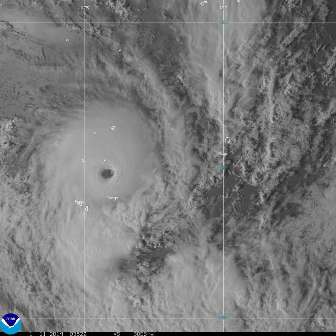
General News
The first tropical cyclone of the season over the south west Pacific region has brought injury and loss of life along with widespread destruction to the Kingdom of Tonga over the weekend. Tropical Cyclone Ian was one of the most powerful tropical cyclones to affect Tonga in many decades, reaching Category 5 intensity as it moved across the islands of central Tonga on Friday and Saturday 10th and 11th January. While the island groups of Ha'apai and Vava'u bore the full force of the cyclone as the eye passed close to both island groups, Tonga's capital, Nuku'alofa, also experienced damaging winds as the cyclone moved southward passing just a few hundred kilometres to the east of Tongatapu and nearby islands. It will take months, even years, for the local economy to recover from this extreme weather event and those families who have lost homes and livelihoods along with the injury and loss of life will remember this event for a long time.

The busiest period of the cyclone season remains ahead of us, with the peak in cyclone numbers, and also intensity of storms, usually occurring in the months of February and March. Therefore there is no time for complacency with Pacific island countries still likely to experience hazardous weather this season. The good news is that meteorological services in the region are better prepared than ever to monitor and detect hazardous weather events. SPREP and the many international partners continue to provide training, infrastructure and technical support in this area to member countries. SPREP's Pacific Meteorological Desk provides real time support for weather services in conjunction with the World Meteorological Organization (WMO) and key partners, and improving warning services to the public and climate prediction services are important elements of this support.

Islands of eastern Ha'apai can be seen just to the north of the eye of Severe Tropical Cyclone IAN seen here late on Saturday 11 January 2014
It has been a somewhat unusual start to the 2013/2014 cyclone season. The arrival of the first major cyclone in mid January is later than we have seen in recent years, and the arrival of the first cyclone east of the dateline was counter to pre-season expectations that activity would likely be primarily focused on places west of the dateline, around Vanuatu and Fiji. Similarly, the South Pacific Convergence Zone (SPCZ) has been particularly active over Tuvalu and Samoa, while to the west PNG and the Solomon Islands have been relatively dry with little sign of an active monsoon so far. After a prolonged dry spell through the second half of 2013, the Cook Islands experienced significant rains around Christmas and early in the new year, something that wasn't expected but was nevertheless very welcome for Cook Islanders.
The busiest period of the cyclone season remains ahead of us, with the peak in cyclone numbers, and also intensity of storms, usually occurring in the months of February and March. Therefore there is no time for complacency with Pacific island countries still likely to experience hazardous weather this season. The good news is that meteorological services in the region are better prepared than ever to monitor and detect hazardous weather events. SPREP and the many international partners continue to provide training, infrastructure and technical support in this area to member countries. SPREP's Pacific Meteorological Desk provides real time support for weather services in conjunction with the World Meteorological Organization (WMO) and key partners, and improving warning services to the public and climate prediction services are important elements of this support.
For more information, contact Neville Koop, Meteorology/Climatology Adviser at SPREP.